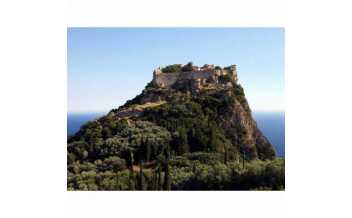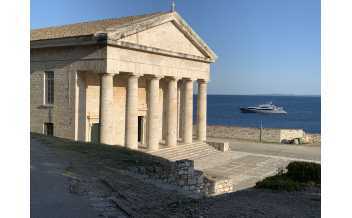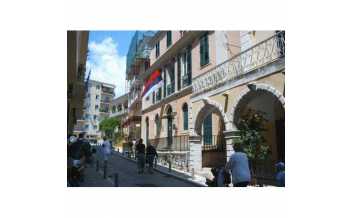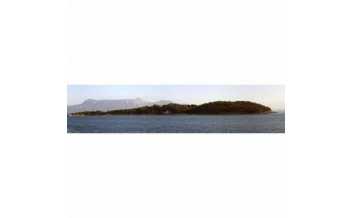« Greece was a muse. It inspired creativity in magical ways that I can’t even begin to understand or explain » - Joe Bonamassa
Corfu is one of the largest Greek islands and has all the requirements of a paradise, between mountains and forests, timeless village and azure blue beaches. Greek but with Italian influences due to its geographical position and history, Corfu has always made tourists dream but has known through the centuries to inspire writers and artists such as Goethe, Alfred Sisley or Lawrence Durrell.
Today, Corfu is a true cultural melting pot, with Venetian influences in its architecture, Italian and French flavours in its cuisine and a typically British lifestyle. For many years, Corfu Town has been overlooked by tourists heading straight to the beach, which has probably saved this beautifully preserved Venetian town from the property developers. Don't leave without seeing the Gorgon pediment from the Artemis Temple (580BC) in the Archaeological Museum and the spectacular art collection in the Museum of Asian Art.
Activities
-
-
Archaeological Museum of Corfu
The museum exhibits the finds from several excavated sites across the island,...
-
Byzantine Museum of Antivouniotissa, Corfu
The Antivouniotissa Museum is in the former church of the Holy Mother of God...
-
Casa Parlante Museum, Corfu
Slap bang in the centre of Corfu town, a few meters from Liston and Spianada...
-
Gardiki Castle, Corfu
A 13th-century Byzantine castle which was one of three castles which defended...
-
-
-
Maitland Monument, Corfu
This neoclassical monument at the end of Spianada Square was built in the...
-
-
Saint George's Church, The Old Fortress,...
The neoclassical Saint George's church with its striking white marble pillars...
-
Saint Spyridon Church, Corfu
In the centre of Corfu Old Town, this Greek Orthodox church was built in the...
-
-
The Achilleion Palace, Corfu
Perched on a rock with stunning views over the sea, the palace was built as a...
-
The Monastery at Arkoudilas, Corfu
'Arkoudilas' on Corfu's South West Coat is usually known for its beautiful...
-
The Monastery, Palaiokastritsa, Corfu
The monastery of the Holy Theotokos, also known as Paleokastritsa Monastery,...
-





















